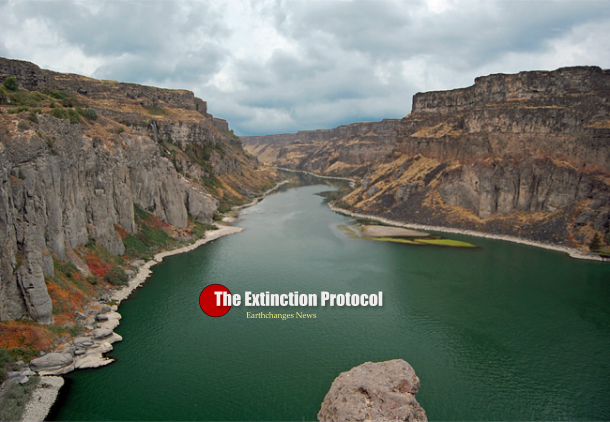Is Snake River Plain’s volcano a bigger threat to America than Yellowstone?

For those that thought Yellowstone super-volcano was one of the biggest natural threats to the USA, think again. Eruptions at Snake River Plain in Idaho were “significantly larger” than geologists had previously thought. Scientists from the University of Leicester discovered there were a staggering 12 massive eruptions over the course of four million years, beginning 12 million years ago.
The massive eruptions helped to form the 100 kilometer-wide Snake River Basin, with one of the most powerful eruptions occurring 8.1 million years ago. The eruption’s volume exceeded 1,900 km3 and created a 1.3km thick caldera. Furthermore, the Snake River Plain is situated on the Yellowstone Hotspot track, a region which spans from Nevada, through Oregon and Idaho and then to Wyoming where Yellowstone Volcano is located.
Dr Tom Knott from the University of Leicester, said: “While it is well-know that Yellowstone has erupted catastrophically in recent times perhaps less widely appreciated is that these were just the latest in a protracted history of numerous catastrophic super-eruptions that have burned a track along the Snake River eastwards from Oregon to Yellowstone from 16 Ma to present.
“The size and magnitude of this newly defined eruption is as large, if not larger, than better known eruptions at Yellowstone, and it is just the first in an emerging record of newly discovered super-eruptions during a period of intense magmatic activity between eight and 12 million years ago.” –Express
Several volcanic rift zones traverse the Snake River Plain. Volcanic rift zones are weak areas where the earth’s crust has been stretched and thinned and fissures have developed. Magma under pressure follows these fissures to the surface.
The most extensive system of fissures on the Snake River Plain is called the Great Rift, which passes through Craters of the Moon. This volcanic rift zone is 60 miles long and from 1.5 to five miles wide. At Craters of the Moon it is characterized by short surface cracks, more than 25 cinder cones, and is the point of origin of over 60 lava flows. Geologists believe that the formation of the Great Rift is related to Basin and Range type faulting.
Eruptions at Craters of the Moon
Most of the lava flows exposed at Craters of the Moon erupted between 2,000 and 15,000 years ago. These flows were deposited during eight eruptive periods, each separated by periods of relative calm. This cycle of eruptions interspersed with periods of calm is associated with the buildup of pressure as magma accumulates beneath the surface. Strain increases until the resistance of the earth’s crust is overcome, magma rises to the surface, and an eruption takes place. As soon as the magmatic pressure dissipates, the eruption ceases until the pressure can build once more.
What Does the Future Hold?
If what geologists tell us proves to be true, it is likely that there will be another eruption at Craters of the Moon. By studying the flows that make up the Craters of the Moon lava field, geologists have been able to determine an eruptive pattern that indicates the area is merely in a stage of dormancy. They believe that past eruptions conform to a predictable time schedule and that the eruptive cycle will begin again within the next 1,000 years. –NPS
